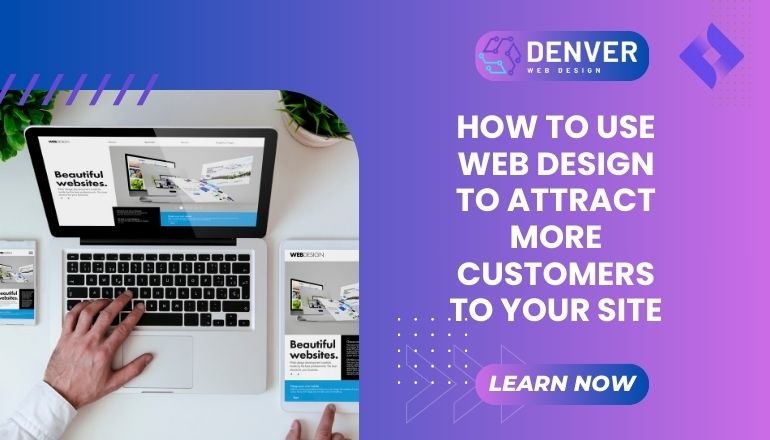
In today’s digital world, the design of your website plays a pivotal role in attracting and retaining customers. A well-designed website not only enhances user experience but also improves SEO, leading to higher traffic and conversions. With the right strategies, your web design can become a powerful tool for business growth. Whether you’re revamping an existing site or building one from scratch, understanding the best practices in web design can make all the difference.
What is Web Design and Why is it Crucial for Business Success?
Web design refers to the process of creating and organizing the layout, structure, and appearance of a website. It encompasses everything from color schemes to navigation, images, fonts, and responsiveness. Web design is crucial because it directly impacts how visitors perceive your brand and interact with your site.
In the competitive online space, a well-optimized website ensures that users can easily find what they’re looking for, whether they’re on a desktop, tablet, or mobile device. This concept, known as responsive web design, is especially important, as it adjusts the layout of your site to different screen sizes, improving the overall user experience.
Additionally, a website designed with SEO best practices in mind can improve your search engine visibility, leading to higher rankings and more organic traffic. A user-friendly, well-structured website can also increase the likelihood of users converting into customers, boosting your bottom line.
Why is Web Design Essential for Your Website?
Good web design is essential for various reasons, including enhancing user experience, boosting SEO, and driving conversions. A mobile-first design, where the site is optimized for mobile devices first, can be particularly impactful. With more people accessing websites through smartphones, having a responsive, fast-loading site ensures a seamless browsing experience that keeps visitors engaged.
SEO plays a huge role in driving traffic to your site. Search engines like Google prioritize websites with solid technical foundations, including fast load times, responsive design, and proper use of headings, titles, and keywords. By implementing SEO-optimized web design, you are more likely to rank higher on search engine results pages (SERPs), which can significantly increase your visibility and attract potential customers.
Moreover, well-designed websites encourage visitors to take action—whether that’s purchasing a product, signing up for a newsletter, or requesting more information. Key design elements like clear calls-to-action (CTAs), fast load speeds, and intuitive navigation directly impact your conversion rate.
Key Features of Effective Web Design
Effective web design is not just about making your site look visually appealing. It’s about ensuring the site is functional, user-friendly, and optimized for SEO. Here are some key features every website should incorporate:
- Responsive Design: Ensure your site adapts seamlessly across all devices, improving usability and accessibility for mobile and desktop users.
- Clear Navigation: Intuitive navigation makes it easy for visitors to find the information they need, enhancing user experience.
- Fast Load Time: Site speed is a critical factor for both SEO and user satisfaction. Slow-loading websites can lead to high bounce rates and lower rankings.
- SEO-Friendly Structure: Use proper headings, alt texts for images, and optimized content to ensure search engines can easily crawl and index your website.
- Secure Payment Gateways (for E-commerce Sites): If you’re running an online store, a secure checkout process is essential to build trust and protect customer data.
- Conversion Rate Optimization (CRO): Focus on designing user flows that lead visitors toward completing your desired actions, whether it’s purchasing, signing up, or contacting you.
Best Practices for Web Design
When designing your website, follow these best practices to ensure a successful outcome:
- Keep it Simple and Clean: Avoid cluttered layouts. A simple, visually appealing design makes it easier for visitors to navigate and engage with your site.
- Focus on Mobile-First Design: With a growing number of users browsing on mobile devices, ensure your website is optimized for smartphones and tablets first.
- Use Consistent Branding: Your website should reflect your brand identity through color schemes, fonts, and imagery, fostering brand recognition and trust.
- Prioritize User Experience (UX) Design: Apply UX design principles by creating intuitive layouts that make navigation easy and content easy to consume.
- Optimize Content for SEO: Ensure your content is keyword-rich, informative, and structured to help search engines understand its relevance.
Common Mistakes to Avoid in Web Design
While web design can significantly impact your business, many website owners make common mistakes that can hurt their performance. Here are a few to avoid:
- Overcomplicating the Tech Stack: Opting for a complex frontend and backend setup can result in slower load times and maintenance headaches. Stick to the essentials and ensure performance is prioritized.
- Neglecting Cross-Browser Compatibility: Your website should function properly across all major browsers. Failing to test for compatibility can lead to users experiencing broken layouts or missing content.
- Ignoring Analytics and Testing: Without continuous testing and monitoring of user behavior, it’s difficult to optimize your site effectively. Use website analytics tools to track performance and adjust accordingly.
Conclusion: Key Takeaways
Web design is a powerful tool that can attract more customers to your site by enhancing user experience, improving SEO, and increasing conversions. To achieve the best results, focus on responsive web design, follow best practices for user experience, and make your website SEO-friendly. By avoiding common mistakes and continuously optimizing your site, you’ll be on your way to achieving better search engine rankings, higher traffic, and more conversions.
If you’re ready to take your website to the next level, consider partnering with professionals who specialize in custom web design and web development services. At Web Design Denver, we help businesses create stunning, responsive, and user-friendly websites that drive real results. Start optimizing your web design for better SEO rankings and enhanced user experience today!






